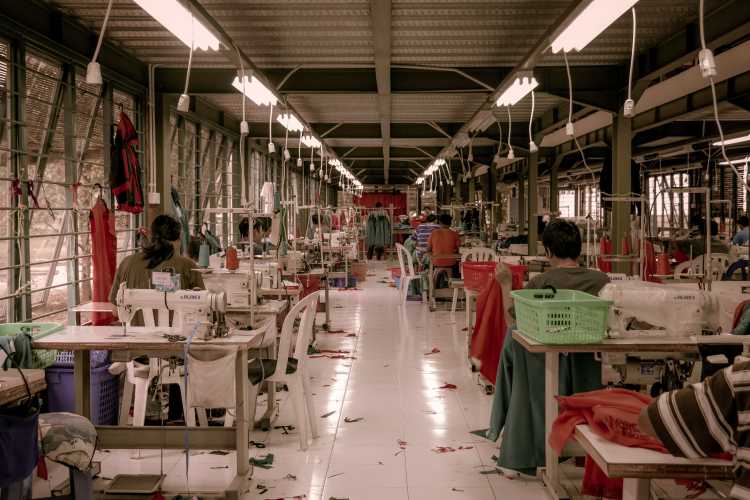
India is looking to stimulate the textile industry by extending the Rebate of State and Central Levies and Taxes Scheme by another two years. Launched about four years ago to improve the global competitiveness of the apparel, garment, and home furnishing sectors, the scheme is approaching its March 31, 2024 expiry. An extension of this scheme through the fiscal year 2025-26 is anticipated after the recent extension of the Remission of Duties and Taxes on Exported Products Scheme.
The extension of ROSCTL will give a fillip to India’s exports that are facing sluggish global demand. The scheme is also expected to foster job creation. It offers exporters a rebate on all embedded taxes and levies that are not addressed by other mechanisms. Industry stakeholders hope that, in conjunction with India’s free trade agreements, ROSCTL could significantly transform the Indian apparel and made-ups sectors, propelling the nation to a more commanding position in global trade.
READ | Explained: India’s struggle to eradicate multi-dimensional poverty
The government is contemplating whether to merge RODTEP and ROSCTL to streamline their operation. A decision is expected by the end of the financial year 2025-26. Following industry appeals, the textiles ministry has sought the Union Cabinet’s endorsement for this move.
Furthermore, the deadline for new applications under the Production-Linked Incentive (PLI) scheme for textiles has been extended to December 2023. This reflects the recognition of India’s substantial capabilities in textiles, which, with government support, could continue to thrive in the global market. The technical textiles segment, in particular, has experienced strong growth and is projected to double in the next five years.
India in the global textile industry
India is the world’s second-largest textile producer, trailing only China, and accounts for nearly 11% of global textile production. The Indian textile industry is a cornerstone of the national economy, with projections suggesting its GDP contribution could more than double from 2.3% to about 5% by 2030. The Confederation of Indian Industries and Primus Partners anticipate an annual 9% increase in the Gross Value Added (GVA) from 2021 to 2028.
While growth rates vary across different segments, technical textiles are expected to be the standout performer, with an estimated compound annual growth rate (CAGR) of 15%.
The government’s focus on the sector is evident ininitiatives such as PM MITRA, PLI, and SAMARTH. The industry, employing over 100 million people, aims to hit a $250 billion turnover by 2030 and is well on its way, with exports projected to reach $65 billion by FY26.
A significant advantage for India is the local availability of essential textile raw materials like cotton, jute, and silk. The country’s unique handicrafts, deeply rooted in tradition, give it a distinct edge. With strategic direction, India is poised to become a specialised textile export hub through domestic value addition.
Industry analysts suggest that to tap into this vast potential, integrated strategies emphasising value addition, competitiveness, and sustainability are crucial. Such approaches would not only spur job creation but also enhance national economic output.
The sector’s challenges, such as fragmented supply chains, limited access to quality training, and reliance on labour-intensive processes, need to be addressed. The adoption of modern technologies and quality assurance across the value chain is essential for the industry to fulfil its potential.
As the global textile sector strives to reconcile profitability with sustainability, Indian companies are facing similar challenges. The industry’s focus on supporting women-led enterprises and sustaining traditional crafts is commendable, with over 27 million women employed. Embracing digital technologies, ongoing upgrades, and blockchain for supply chain traceability are steps in the right direction. Collaborating with e-commerce platforms will be instrumental in achieving industry goals and ensuring a prosperous future.
India’s textile exports have been declining in recent months, with a year-on-year decline of 11.3% in June 2023. This is due to a number of factors, including sluggish global demand, rising input costs, and supply chain disruptions. The ROSCTL scheme is expected to help exporters mitigate some of these challenges and boost exports in the coming months.
The global textile industry is facing a number of challenges, including rising inflation, supply chain disruptions, and the ongoing war in Ukraine. These trends are likely to have a negative impact on the Indian textile industry in the short term. However, the industry is well-positioned to weather these challenges in the long term, given its strong fundamentals and the government’s support.
The Indian textile sector is also turning to the Japanese market to bridge the gap in ready-made garment exports, as demonstrated by its substantial presence at the 12th India Tex Trends Fair in Tokyo this July.
